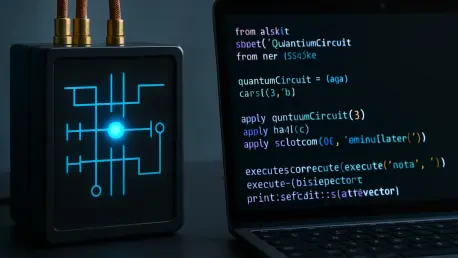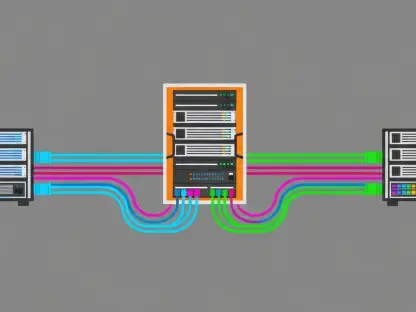Imagine a world where complex problems in cryptography, drug discovery, and climate modeling are solved in mere seconds, tasks that would take classical computers millions of years to complete, thanks to the revolutionary field of quantum computing. This technology, leveraging the bizarre principles of quantum mechanics, promises to unlock such potential. Unlike traditional computers that process bits in a binary format of 0s and 1s, quantum systems utilize qubits, which can exist in multiple states simultaneously thanks to a phenomenon called superposition. This capability allows quantum computers to perform parallel computations at unprecedented speeds. Python, with its vast ecosystem of libraries, has emerged as an accessible tool for exploring this cutting-edge technology. By simulating quantum circuits and running algorithms on both virtual and real quantum hardware, Python serves as a bridge for enthusiasts and professionals alike to dive into this transformative domain and understand its vast possibilities.
1. Understanding the Core Concepts of Quantum Computing
Quantum computing fundamentally differs from classical computing due to its reliance on quantum mechanics, a branch of physics that describes the behavior of matter and energy at the smallest scales. At the heart of this technology are qubits, the quantum equivalent of bits, which can represent 0, 1, or both simultaneously through superposition. This property enables quantum computers to explore multiple solutions to a problem at once, akin to traversing numerous paths simultaneously rather than one at a time. Additionally, qubits can be entangled, meaning the state of one qubit is directly related to another, no matter the distance between them. Such interconnectedness amplifies computational power, making quantum systems exceptionally suited for tasks like factoring large numbers or simulating molecular interactions, areas where classical systems struggle to keep pace with the required computational demands.
Another key concept in quantum computing is the use of quantum gates, which manipulate qubits to perform operations. Among these, the Hadamard gate stands out for its role in creating superposition, effectively placing a qubit into a balanced state of 0 and 1. This gate is foundational for many quantum algorithms, enabling the parallelism that defines quantum advantage. Quantum circuits, composed of a series of these gates, form the basis of quantum programs. Unlike classical circuits that follow linear logic, quantum circuits exploit interference and entanglement to achieve outcomes unattainable by traditional means. Grasping these principles is essential for anyone venturing into quantum programming, as they lay the groundwork for designing algorithms that harness the unique strengths of quantum systems over their classical counterparts.
2. Leveraging Python for Quantum Programming
Python has become a leading language for quantum computing, thanks to its simplicity and a robust set of libraries tailored for quantum simulation and programming. Libraries such as Qiskit, developed by IBM, allow users to design quantum circuits, simulate quantum behavior on classical hardware, and even execute programs on real quantum computers. Other notable tools include Cirq by Google for crafting quantum algorithms, PennyLane for integrating quantum computing with machine learning, and PyQuil for programming quantum systems by Rigetti. These libraries democratize access to quantum technologies, enabling developers to experiment with quantum concepts without needing specialized hardware. Python’s extensive documentation and community support further ease the learning curve for those new to this field, making it an ideal starting point for exploration.
Beyond theoretical learning, Python facilitates practical engagement with quantum computing through hands-on coding experiences. For instance, using Qiskit, one can create a simple quantum circuit to apply a Hadamard gate to a single qubit, placing it into superposition, and then measure the outcome. Running this simulation multiple times reveals the probabilistic nature of quantum measurements, often yielding near-equal counts of 0 and 1, demonstrating the effect of superposition. Such exercises provide tangible insights into quantum mechanics, bridging abstract theory with concrete results. By simulating complex quantum algorithms like Grover’s for search problems or Shor’s for factorization, Python empowers users to test and refine quantum solutions on conventional laptops before scaling to actual quantum hardware, fostering a deeper understanding of potential real-world applications.
3. Future Pathways in Quantum Exploration
Reflecting on the journey through quantum computing basics, it becomes evident that Python plays a pivotal role in making this complex field accessible to a broader audience. The simulations and practical examples crafted with libraries like Qiskit offer a window into the probabilistic and parallel nature of quantum systems, demystifying concepts like superposition and entanglement. These early experiments lay a foundation for grasping how quantum computers tackle problems that were once deemed insurmountable by classical standards, marking significant milestones in technological advancement.
Looking ahead, the next steps involve diving deeper into advanced quantum algorithms and exploring hybrid approaches that combine classical and quantum computing for optimized solutions. Engaging with open-source communities around libraries such as Cirq or PennyLane can accelerate learning, providing access to cutting-edge research and collaborative projects. Additionally, experimenting with real quantum hardware through cloud platforms offers a chance to test theories in practical settings. As quantum technology continues to evolve, staying updated with emerging tools and methodologies will be crucial for harnessing its full potential in solving global challenges.









